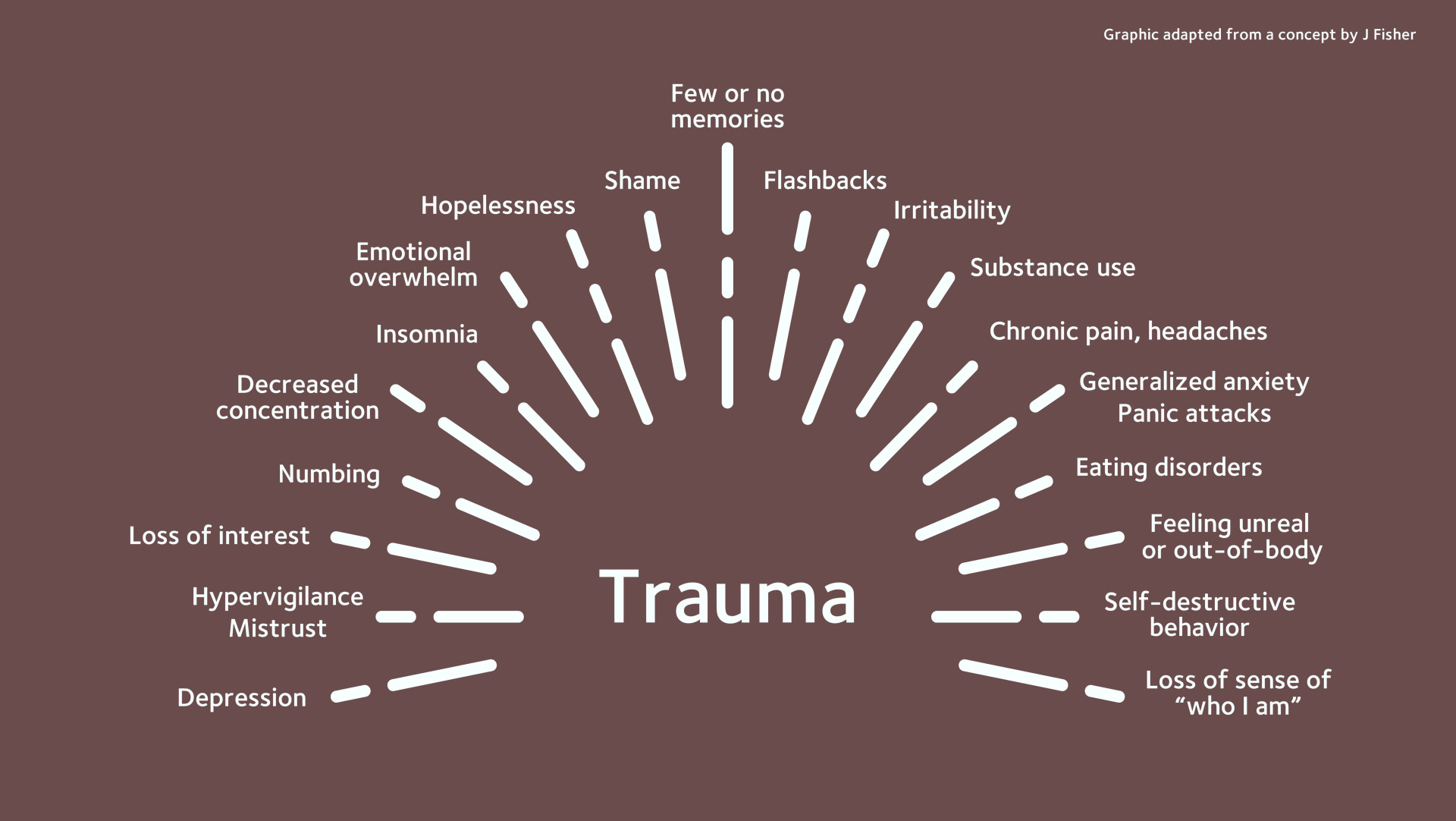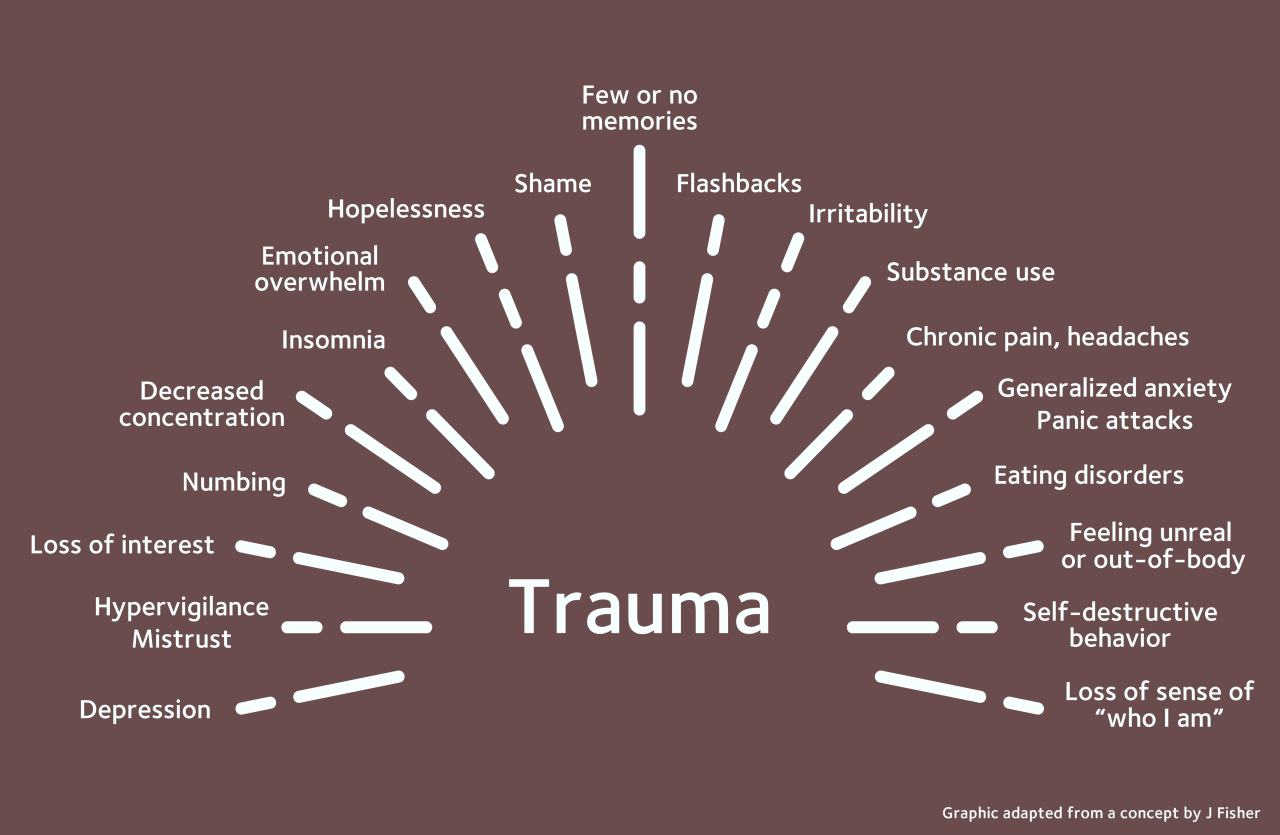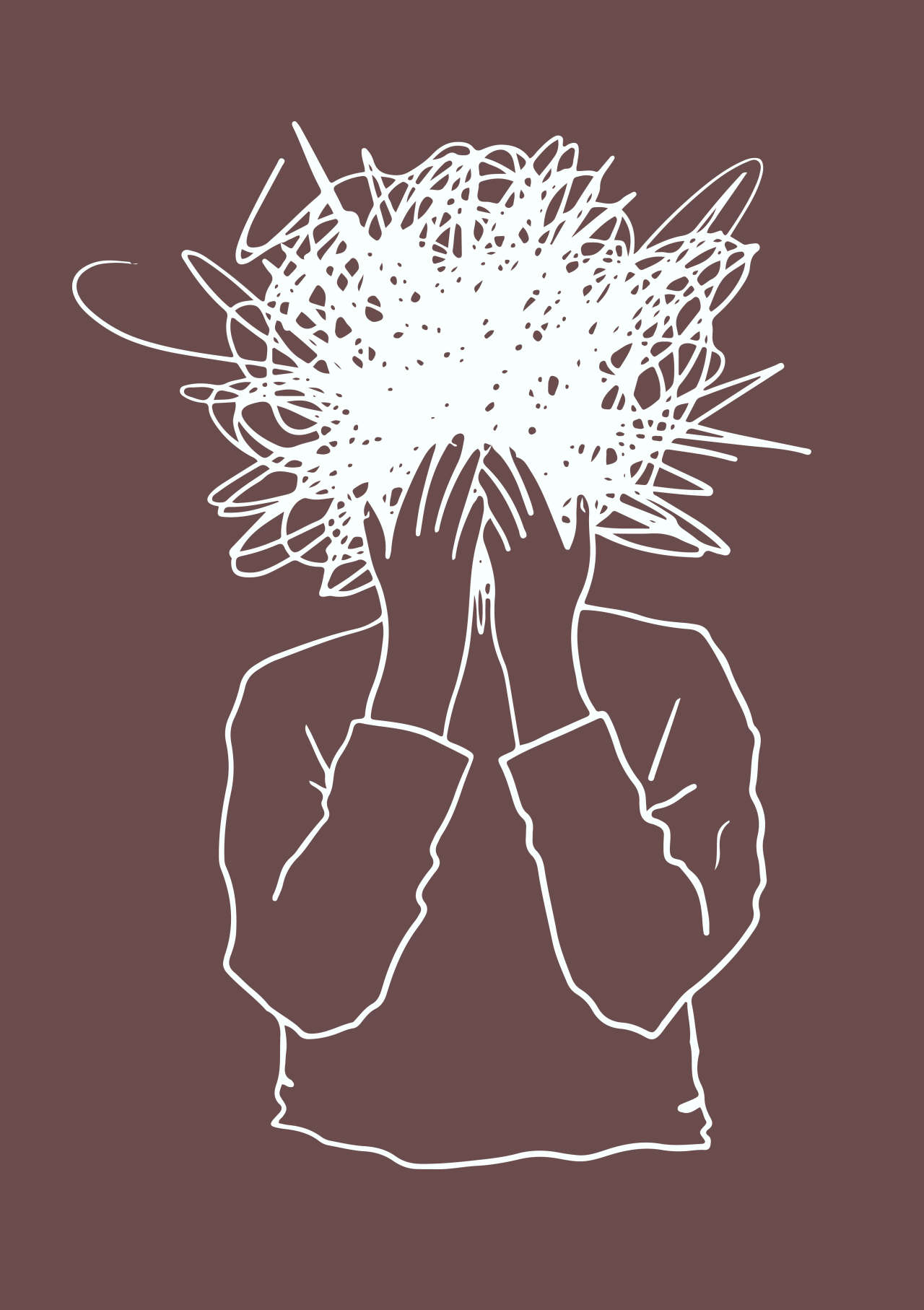I specialize in understanding and addressing the impact of trauma—or, in other words, difficult, terrifying experiences that overwhelm our capacity to cope. Trauma creates a cascade of feelings like sadness and worry, low self-confidence, emotional struggles, a tendency to avoid certain things, hypervigilance, irritability, and difficulties trusting others.


Trauma can take various forms, including acts of war, terrorism, motor vehicle accidents, sexual abuse, domestic violence, as well as natural disasters such as flooding, hurricanes, or tornadoes. These shocking and emotionally overwhelming situations may involve actual or threatened death, serious injury, or threat to physical integrity.
Similarly, emotional neglect (absence of warmth, support, and nurturance during the early life stages) and emotional abuse leave a deep, long-lasting psychological wound. This can disrupt the child’s sense of psychological safety and hinder the normal development of crucial skills like emotion regulation, self-acceptance, confidence, independence, and self-reliance later in life. There is a highly significant relationship between adverse childhood experiences and depression, suicide attempts, alcoholism, substance use, sexual promiscuity, domestic violence, cigarette smoking, and obesity.
How common is trauma? Exposure to trauma is widespread. Some studies suggest that up to 70 percent of individuals will potentially experience at least one traumatic event in their lives. About 5 out of every 100 adults in the U.S. has post-traumatic stress disorder (PTSD) in any given year. If you have suffered trauma, you probably experience the world as dangerous and untrustworthy. Vulnerable and rejected parts will carry the disowned or dissociated emotions, memories, and sensations while other parts will create firewalls and barriers to protect your vulnerability. Survival mechanisms that were useful at one point might be unhelpful now.
Even when post-traumatic stress often develops soon after exposure to overwhelming events, it can remain chronic for decades and present in an episodic manner, with symptoms fluctuating in severity across the lifespan as individuals encounter triggers and new stressors.

How does trauma therapy work? Trauma therapy has three important phases: establishing safety, retelling the story of the traumatic event, and reconnecting with others. Treatment entails creating a secure attachment in which previously unbearable emotional states can be experienced, expressed, understood, and reflected upon—and thus rendered meaningful and bearable. Rather than just looking into the past, my therapy approach also focuses on how post-traumatic stress is affecting you now, finding solutions to current problems, stressors, and relationship issues.
Occasionally, I first treat trauma using interventions that are likely to provide quick psychological relief, such as Accelerated Resolution Therapy (which uses bilateral stimulation, like eye movement desensitization and reprocessing) or Written Exposure Therapy (a highly effective, and brief, exposure-based therapy).
